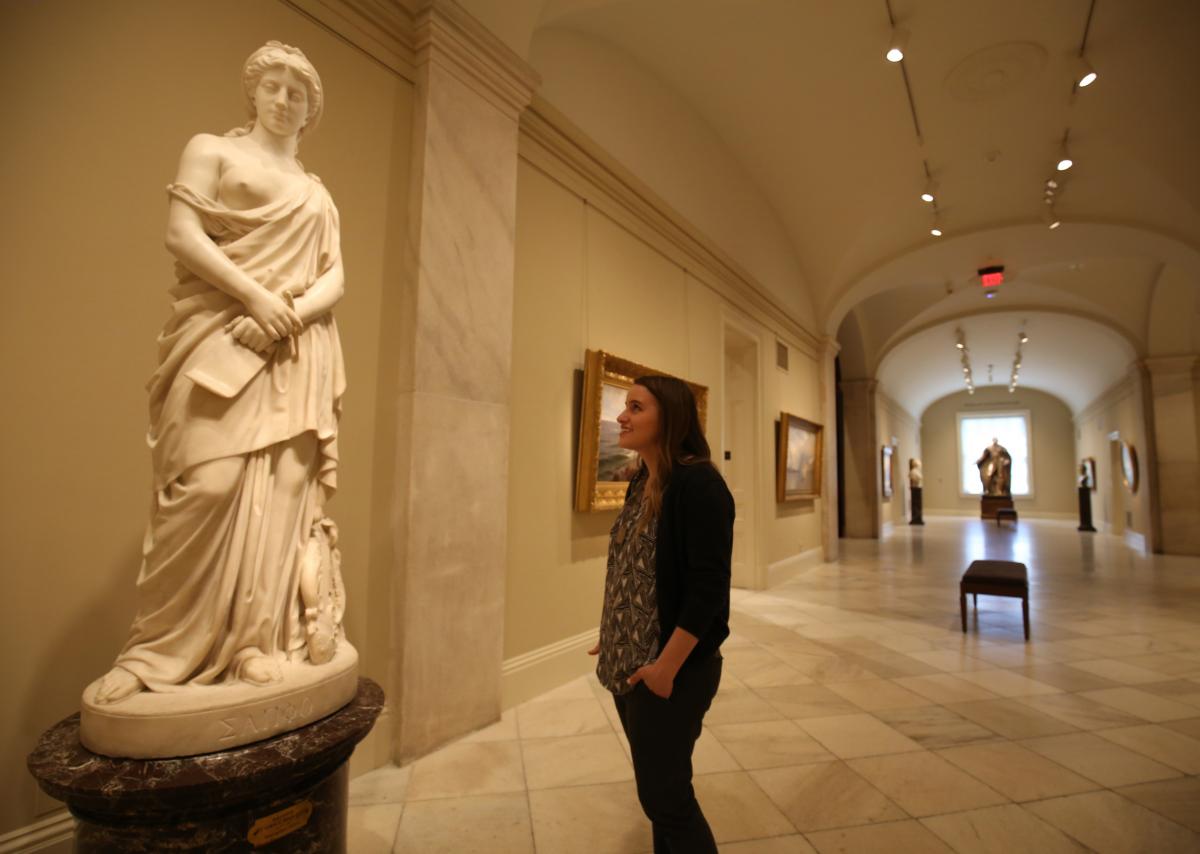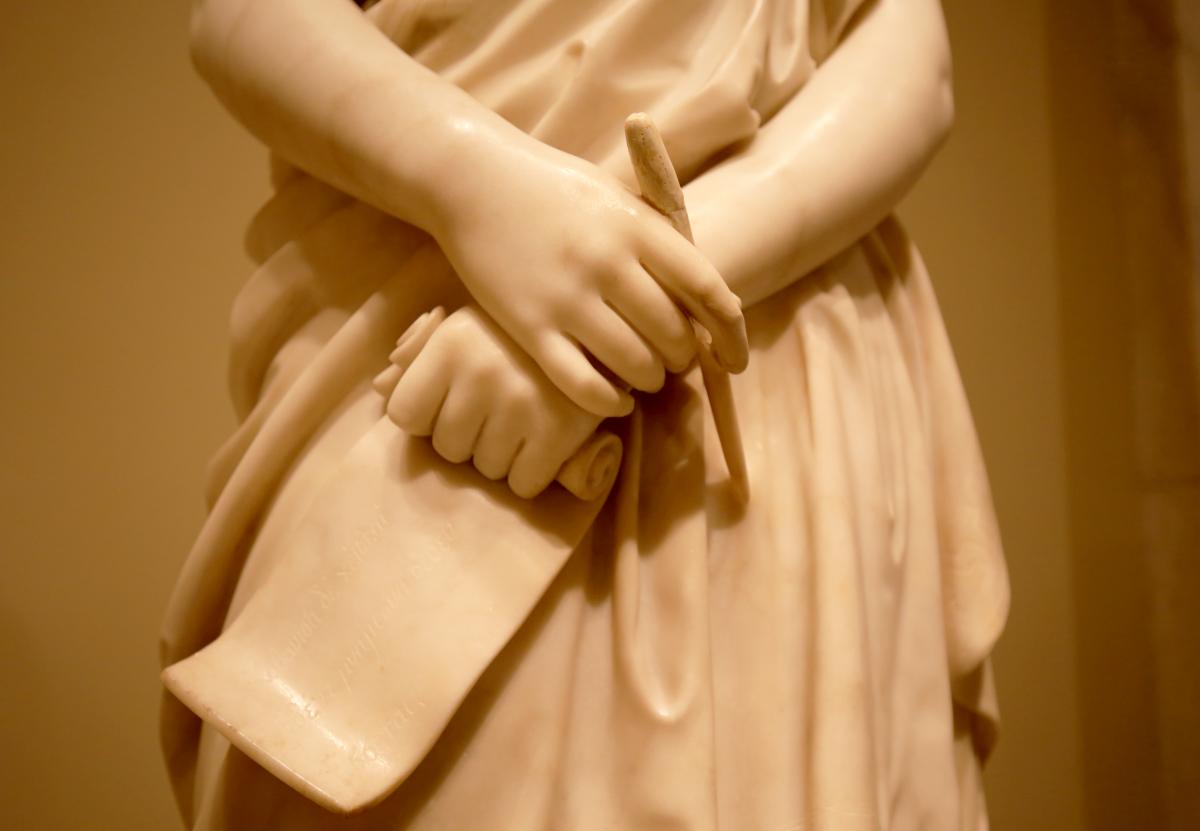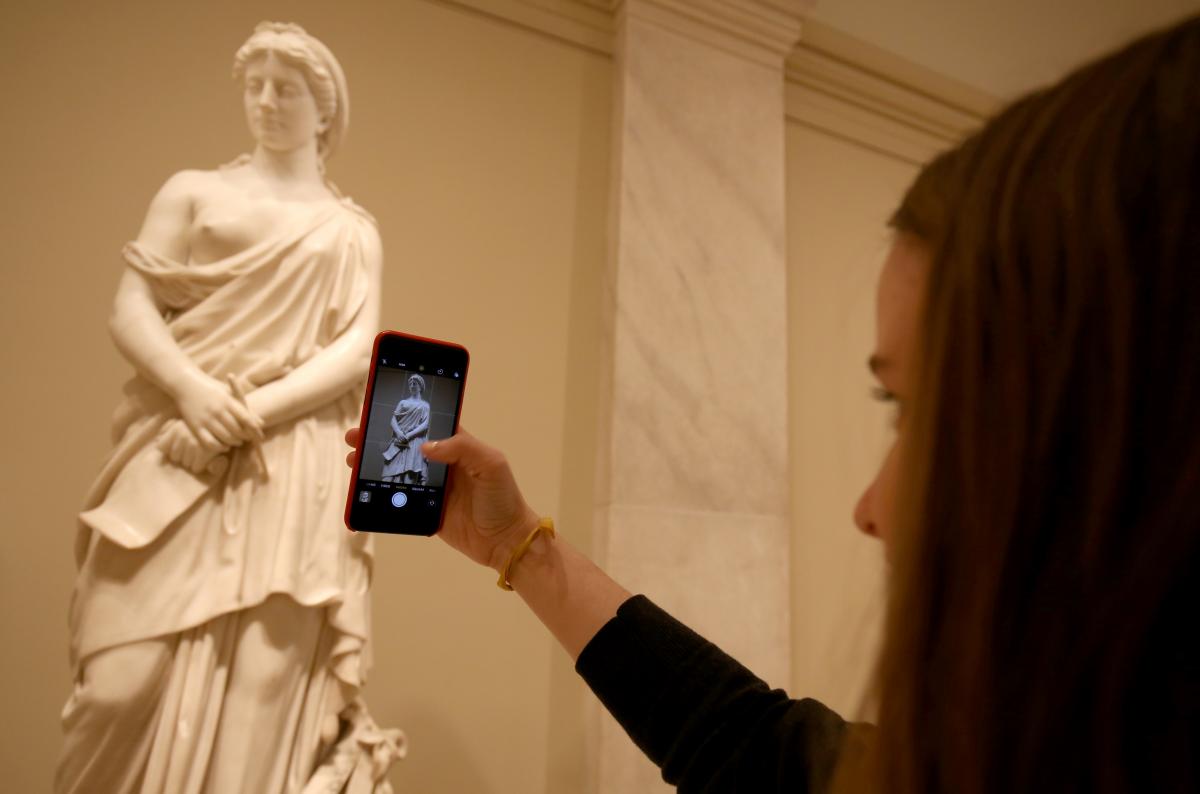Sarah Hines recently interned in SAAM's Office of External Affairs.
SAAM’s collection has many beautiful works of art connected to the themes of literature and poetry, but for me, Vinnie Ream’s sculpture of Sappho on SAAM's second floor stands out. Vinnie Ream (1847-1914) was one of a small group of female sculptors that enjoyed successful careers in the late 19th century. Although you might never have heard of Lavinia Ellen "Vinnie" Ream Hoxie, you may be familiar with two of her more famous sculptures – the statue of Abraham Lincoln in the Rotunda of the Capitol Building, and the statue of Admiral Farragut in Farragut Square (both here in D.C).
"I have worked in my studio not envying kings in their splendor; my mind to me was my kingdom and my work more than diamonds and rubies." Vinnie Ream, from an address given to the International Council of Women, 1909.
As a woman trying to find success as a sculptor, Ream had to carefully manage her expressions of femininity in order to stay within appropriate behavior for women at the time. Ream’s strategy was to align herself with more traditionally feminine artistic traditions, cultivating a public image that enabled her to be accepted as a female sculptor. In 1909, Ream delivered an address entitled “The Field of Sculpture for Women,” arguing that sculpture was “…eminently a field for women; no one has ever questioned that the eyes are as true, the thoughts as noble, the touch as delicate as with men, and the field of sculpture is unlimited – that meadow of delight is full of flowers to be plucked….”[1] This poetic description helped to align the field of sculpture with traditionally feminine art forms. By highlighting her involvement with art forms that were considered appropriate for women, Ream encouraged the public to regard her as a model of feminine artistic virtue and cultivated a circle of admirers who wrote poems and songs praising her youth, beauty, and artistic abilities.
The legacy of Sappho stands for the attributes that Ream emphasized in order to maintain her reputation as a celebrated female sculptor. Sappho is actually one of the only sculptures of a female figure that Ream ever created, as well as one of the only works that wasn’t completed for a patron or commission. In many ways, Sappho can be understood as a representation of Ream, emphasizing her alignment with graceful poetic virtue. In fact, a bronze copy of the sculpture marks Vinnie Ream's grave in Arlington National Cemetery where she is buried with her husband, Brigadier General Richard L. Hoxie. Just as Ream stood out as a sculptor because she was a woman, Sappho was the preeminent female poet of her time, and it makes perfect sense that Ream would want to channel the celebrated Greek poet, who was sometimes called “the tenth muse.”
[1] Vinnie Ream Hoxie, “The Field of Sculpture for Women,” Box 5, Vinnie Ream and R.L. Hoxie Papers, Manuscript Division, Library of Congress, Washington, D.C.





















